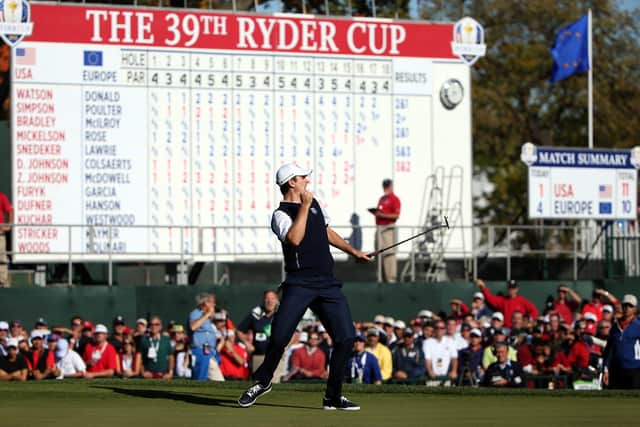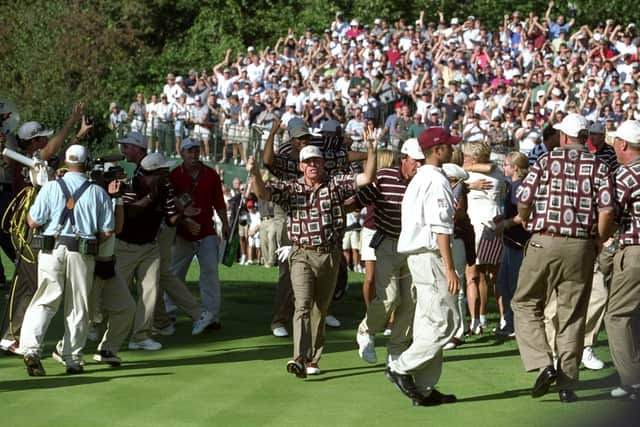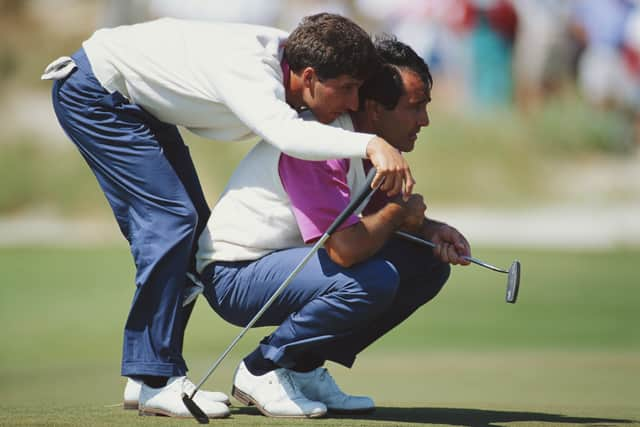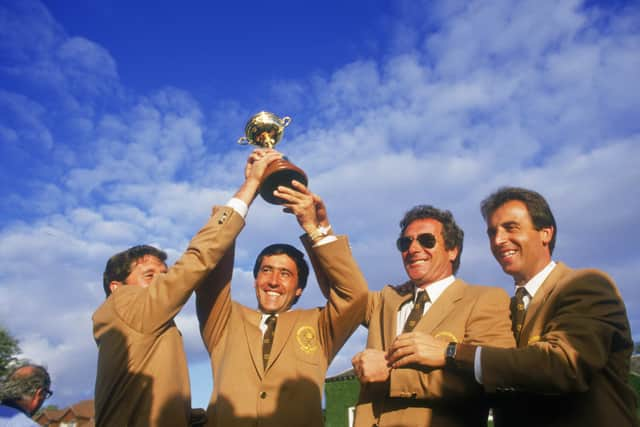Ryder Cup: The Miracle at Medinah, the Battle of Brookline and more of the most memorable contests
and live on Freeview channel 276
94 years since the Ryder Cup was first contested, Team USA and Team Europe will go head to head in the 43rd instalment of the thrilling event at Whistling Straights, Georgia.
Delayed a year due to the Covid-19 pandemic, Team Europe will enter this year’s tournament as the defending champions after a 17½ points to 10½ points win in 2018 at Le Golf National, France.
Advertisement
Hide AdAdvertisement
Hide AdHowever, Team USA go into this year’s event as the pre-tournament favourites with the bookmakers as they aim to lift the trophy for the 26th time.
Some of the previous 42 chapters of the competition have been more memorable than others whether it’s for stunning come backs or moments of controversy.
Here are just a few of the best remembered Ryder Cup tournaments in recent history:
The Miracle at Medinah (2012)


Probably the most famous Ryder Cup contest, certainly of this millennium, the 39th edition of the tournament at Medinah Country Club in Medinah, Illinois is well deserving of the name.
Advertisement
Hide AdAdvertisement
Hide AdIt was the first Ryder Cup held since the golfing community lost the great Seve Ballesteros, a close friend of that year’s Team Europe captain José Olazábal, and emotions were high in the European camp.
As is always the case, the men in blue were up against not only 12 of the world’s best golfer, but a partisan home crowd right behind their team.
Going into the final day’s play the USA lead 10–6, meaning Europe needed 8½ points to retain the trophy, and what followed would go down as one of the greatest comeback victories not just in Golf but in sporting history.
Luke Donald started the final day off for Europe against Bubbah Watson and instigated the run of eight single matches won and one tie to reach their target, culminating with Tiger Woods’ missed put on the final green and conceding the match to Francesco Molinari.
The Battle of Brookline (1999)
Advertisement
Hide AdAdvertisement
Hide AdSome Ryder Cup’s are remembered for the right reasons, others not so much.


Team USA won the 33rd Ryder Cup by one point with a final score of 14½ to 13½ with a fantastic final day performance where they won their first six matches to take the lead.
However, the incredible action on the course wasn't what grabbed the headlines across the Atlantic as much as the behaviour or the home fans and even the Team USA players.
The Boston crowd had been viciously heckling the Europeans all weekend with Mark James even claiming that one fan spat at his wife.
Advertisement
Hide AdAdvertisement
Hide AdAs for the players, accusations of unsportsmanlike behaviour followed after the team invaded the course at the 17th green awhen Justin Leonard holed a long putt with José Olazábal waiting to take his own shot.
Most of the USA team did go onto apologise for their actions but the 1999 Ryder Cup remains the standard bearer for how professionals and crowds should not conduct themselves.
The War on the Shore (1991)
Eight years before the chaos of Brookline came the 29th Ryder Cup at the Ocean Course at Kiawah Island.


The competition, another thrilling encounter which the USA won 14½ to 13½ , was also embroiled in controversies.
Advertisement
Hide AdAdvertisement
Hide AdTeam USA’s Steve Pate sat out the first three phases of play through injury following much discussion but would return to take part in the Saturday afternoon four balls.
On the final day, Team USA confirmed that Pate would not participate in his scheduled singles match with David Gilford and the point was automatically halved.
With Pate considered one of the weaker players on the American team, allegations of gamesmanship were made by both the media and Team Europe.
Incredibly, that was far from the most controversial moment in 1991, which came during the ongoing rivalry between the USA’s Paul Azinger and Europe’s Seve Ballesteros.
Advertisement
Hide AdAdvertisement
Hide AdThe pair had been locking horns for a few years at that point and things came to a head during the Friday foursome between Ballesteros/Olazábal and Azinger/Beck when the Americans were accused of changing balls, a violation of the one ball rule.
Azinger denied the claim but would later confirm they had changed balls, only after they could no longer be penalised for doing so.
The 35th Ryder Cup (2004)
Tensions were still high after the events of 1999 as Team Europe returned to play in the USA for the first time since Brookline.


Europe had won the trophy back at The Belfry, Warwickshire in 2002 with the competition having been delayed a year due to the tragic events of the September 11 terror attacks.
Advertisement
Hide AdAdvertisement
Hide AdHowever, the motivation was to go back to the States and really put one over the American crowd and they did just that with a dominant 18½ to 9½ points victory.
That margin of victory was the heaviest the USA had ever suffered in Ryder Cup history and the joint largest by either side.
If Team Europe wanted revenge on the home USA crowd for 1999, they certainly got it.
The 26th Ryder Cup (1985)
Before the Ryder Cup became Europe vs USA the competition was contested between the USA and Great Britain (1923 to 1971) or the USA and Great Britain & Ireland (1973 to 1977), the rest of Europe joined the fold in 1979.


Advertisement
Hide AdAdvertisement
Hide AdAt that point, Team USA had been undefeated since 1959 and remained so right up to winning the 1983 competition with an astonishing record of 12 wins and one tie.
The streak finally came to an end in 1985 at The Belfry as Team Europe, as they had now become, won their first ever Ryder Cup.
That team didn’t consist of just one or two token representatives from the continent either with Seve Ballesteros, Manuel Pinero, Jose Maria Canizares and Jose Rivero representing Spain and Bernhard Langer flying the flag for Germany alongside their English, Scottish and Welsh teammates.
It was a defining competition for Team Europe and breathed new life into the Ryder Cup for years to come.
A message from the editor:
Advertisement
Hide AdAdvertisement
Hide AdThank you for reading. NationalWorld is a new national news brand, produced by a team of journalists, editors, video producers and designers who live and work across the UK. Find out more about who’s who in the team, and our editorial values. We want to start a community among our readers, so please follow us on Facebook, Twitter and Instagram, and keep the conversation going. You can also sign up to our email newsletters and get a curated selection of our best reads to your inbox every day.
Comment Guidelines
National World encourages reader discussion on our stories. User feedback, insights and back-and-forth exchanges add a rich layer of context to reporting. Please review our Community Guidelines before commenting.
